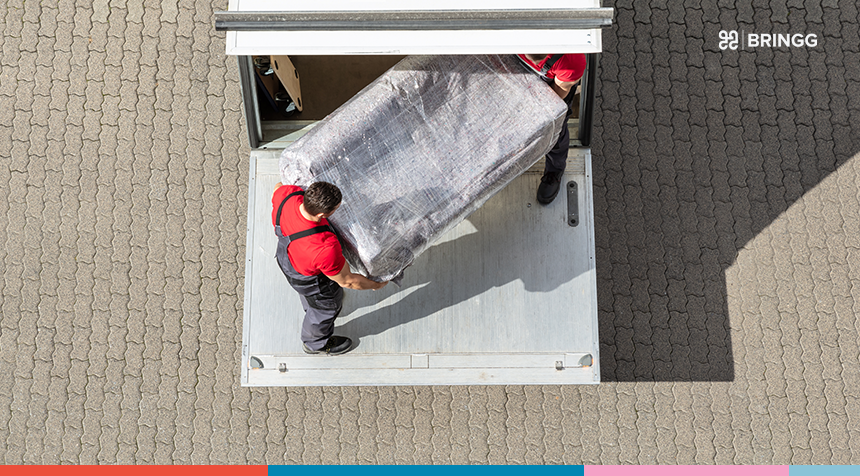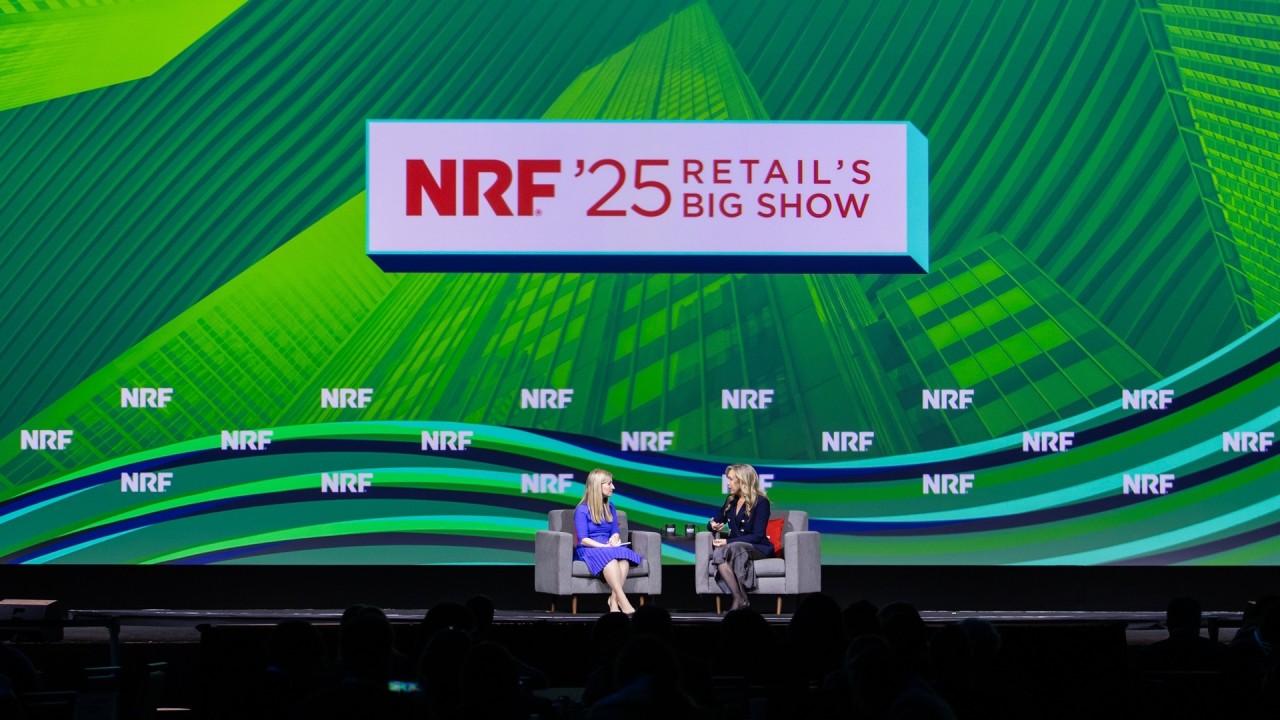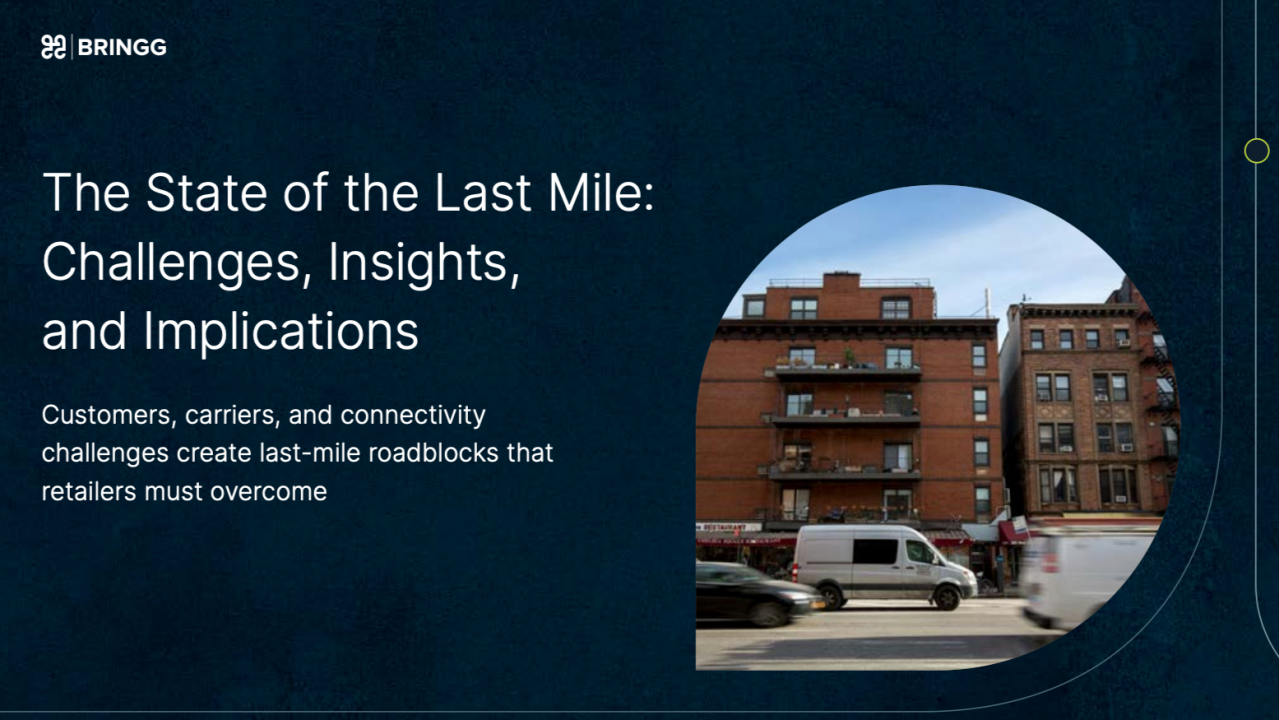Big and bulky eCommerce is complex and costly: 77% of big and bulky retailers say the last mile is the most difficult step in the supply chain and it accounts for 30-40% of all transportation costs.
There’s even more pressure for retailers to succeed during the holiday season because there are greater opportunities for profitability and more online competition each year. In Q4 2024, eCommerce retail sales were 16.4% of total sales—a 9.4 percent increase from Q4 2023.
Successful retailers know that exceptional customer experiences during peak season drive loyalty. However, it’s impossible to build a winning last-mile infrastructure overnight (or even in November) that meets the demands of a busy holiday season.
How can big and bulky retailers evolve their last-mile operations at scale now so they’re better prepared for peak season—all without sacrificing margins? Ali Kamil, expert associate partner at McKinsey, explores this topic with Guy Bloch, CEO of Bringg.
Key takeaways
- 84-90% of consumers won’t return after a poor delivery experience so seamless delivery, from scheduling to execution, is critical for loyalty.
- To compete effectively, retailers must “invest in technology, people, and processes. Quite simply, it’s adapt or die.”
Recommended action
- Peak season success starts now—invest in order visibility, promise accuracy, and optimized route planning to maintain Q4 margins. If available resources can only deliver one, prioritize delivery promise accuracy: it’s the hardest to solve, improves cart conversion rates, and increases operational efficiency.
Related reading: The Last Mile: Key Delivery Strategies for Big and Bulky Delivery
Big and bulky delivery challenges explained
Guy Bloch: Why is big and bulky delivery so challenging?
Ali Kamil: It’s challenging due to labor constraints, as drivers are limited in the number of deliveries they can make in a day. Deliveries take time and require specialized skills for installation. Proper planning and execution are critical. The process is complex, requiring sophisticated tools for effective coordination.
Why delivery needs to be customer-centric
Guy Bloch: I agree. I’m following the big retailers and their quarterly earnings. Consumer behavior is not just changing in terms of expectations but also in spending patterns. They are spending more on consumables, which changes margins and impacts earnings. Deloitte’s recent research indicates a 30-40% drop in consumer electronics and home furnishing spend since early 2022.
If margins are already down, and last-mile delivery is expensive, how does this impact the economics of last-mile deliveries for big and bulky items?
Ali Kamil: Big and bulky deliveries are inherently expensive. Each delivery can take at least 30 minutes to an hour, requiring specialized and certified drivers for installation. This complexity makes it hard and costly. Customer expectations are high, and the delivery has to be accurate and timely. Proper planning and sophisticated tools are necessary to plan these deliveries effectively.
“About 84-90% of customers do not return after a poor delivery experience.”
Delivery impacts repeat business
Guy Bloch: Interesting. Amazon approaches online retail differently from Target and Walmart. It combines technology and logistics to make deliveries exceptional, fast, and inexpensive. Consumers today expect to see delivery options and accurate time slots when they check out.
If delivery is not accurate, something like 84% of consumers won’t return. Is this what you’re seeing as well?
Ali Kamil: Yes, about 84-90% of customers do not return after a poor delivery experience. The ordering experience needs to be seamless, allowing customers to pick delivery slots and ensuring timely and accurate deliveries, including any installation needed.
Big players provide not just delivery but also a frictionless eCommerce experience. Making the delivery process smooth and predictable is key to retaining customers. This is why retailers have to think of the right capabilities and technology to invest in.
Core strategies to compete effectively
Guy Bloch: Working closely with big and bulky retailers, we see these challenges. Labor, carriers, and visibility are key issues. Digitizing and connecting every step of the last mile is crucial for coordination and optimization. What do you advise big and bulky retailers to do to compete effectively?
Ali Kamil: They need to invest in technology, people, and processes. Quite simply, it’s adapt or die. Having the right technology to integrate and coordinate deliveries, training drivers, and creating efficient processes are crucial. Providing seamless eCommerce and delivery experiences will help them compete.
How to prepare for the holiday season
Guy Bloch: If big and bulky retailers don’t adapt, they risk losing customers to those who can provide a better delivery experience. What should they focus on in the next six to eight months to prepare for the holiday season?
Ali Kamil: They should invest in customer experience, making the ordering process seamless, providing delivery promises, and ensuring visibility and accuracy. Investing in technology to digitize and connect their operations is essential. They should focus on high-impact areas and adopt a strategic approach to be ready for the holiday season.
“Don’t try to boil the ocean; start with quick wins and expand. Invest in technology and best practices available in the market.”
Guy Bloch: What should be the investment areas for a c-level executive in big and bulky retail?
Ali Kamil: Invest in digitization to create a seamless customer experience. Focus on planning and optimizing routes to maximize driver utilization. Ensure third-party carriers provide the same level of service. Analytics and continuous improvement are also crucial for long-term success.
Guy Bloch: Summarizing our conversation, it’s clear that adapting is crucial. Focus on technology, people, and processes. Don’t try to boil the ocean; start with quick wins and expand. Invest in technology and best practices available in the market. What are the next steps for those who want to adopt new technologies?
Ali Kamil: Start by evaluating your current customer experience and benchmark it against industry standards. Invest in technology that enables seamless customer experience and efficient planning. Ensure your processes are agile and your drivers and third-party carriers are empowered to provide excellent service.
Big and bulky retailers thrive during peak season with proactive investments like digitized operations, well-trained delivery teams, and streamlined last-mile processes. The path to repeat business and long-term growth starts with smarter tech and a seamless customer experience. Learn how leading brands are preparing in the Big & Bulky Strategy Guide.



